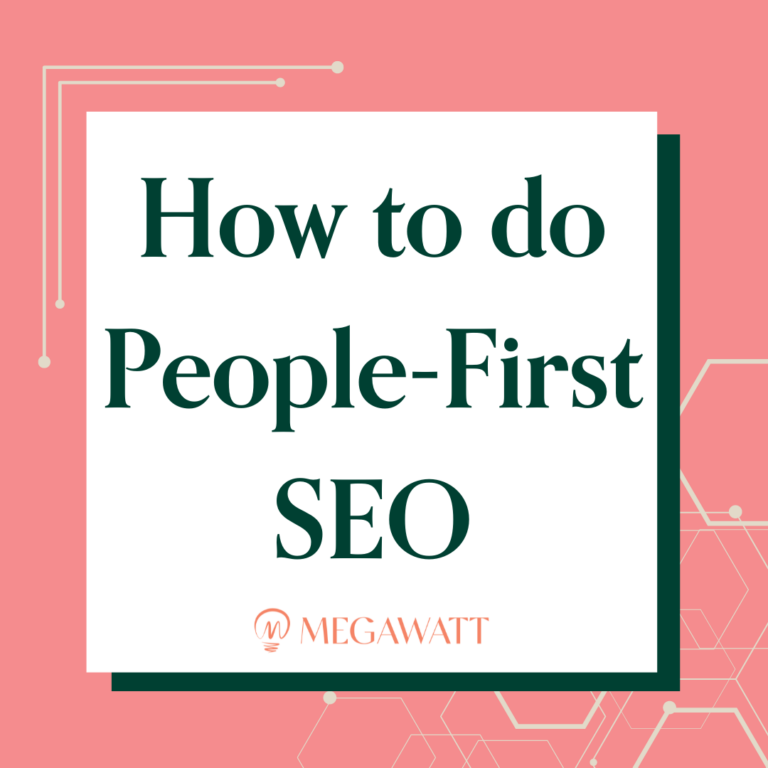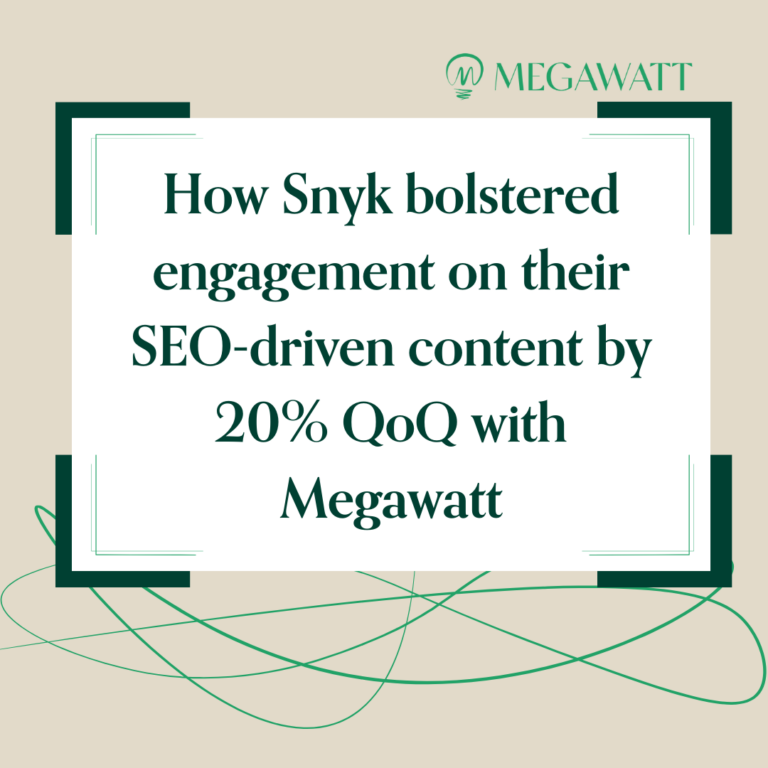Account-based marketing (ABM) is a growing practice at B2B tech companies — and across many other sectors as well. In fact, 70% of marketers reported using an ABM strategy in 2021, which is up 15% from 2020.
What is Account-Based Marketing?
Account-based marketing is a more focused approach to B2B marketing. Instead of starting with high-level brand awareness efforts and then gradually homing in on the prospects who really want what you’re selling, ABM strategies leverage “intent signals.” These are online activities of prospects at target companies that demonstrate a more active interest in what you are selling. ABM can be used to go after a small(er) subset of prospects who are more likely to buy — often on a 1:1 basis.
Rather than casting as wide a net as possible, using an ABM strategy means that marketing and sales teams work together to target best-fit or key accounts (i.e. fewer, but more specific) to turn them into customers.
ABM is a marketing strategy that can be leveraged through many different channels, such as personalized websites, landing pages, email campaigns, events, and content syndication.
One key thing B2B tech companies can do to engage with prospective customers and current customers is to develop a social media account-based marketing strategy.
Below, we will explore:
- What a social media ABM strategy looks like
- Potential benefits of account-based marketing
- The top five best practices to successfully execute a social ABM plan
The State of ABM Today
In 2020, the top five ABM tactics used by organizations were:
- Sales rep outreach
- Digital advertising
- Direct mail
- Marketing emails
- Events
But an under-utilized method to further your ABM strategy is to leverage social media channels. While many marketers know that social media can be used for ABM, not everyone knows its potential.
Why Test a Social Media ABM Strategy?
Your prospects are likely already spending countless hours on social media platforms like LinkedIn. This gives you plenty of opportunities to form a connection through a channel they are already on — rather than waiting for them to come to your website or sign up for your email list.
Not only can a social media ABM strategy be executed on its own, but it can also fit into a larger ABM strategy that uses multiple channels. For example, marketers can research prospects’ personal and professional interests via social media and incorporate that information into email outreach.
Now that you know what ABM is, some of the different channels you can use, and why social media as an ABM channel cannot be ignored, let’s explore how to do it right.
Related Content: Three Categories of B2B Content and Where They Fit into the Marketing Funnel
5 Best Practices for ABM Campaigns on Social Media
When it comes to account-based marketing campaigns, you get what you give. The amount of research, preparation, and collaboration put into this type of marketing strategy will determine how successful your results are.
With that, here are five best practices to keep in mind when building your social media ABM plan.
1. Use Social ABM to Increase Sales and Marketing Alignment
Sales teams and marketing teams struggle to speak the same language, align on KPIs, and agree about what “success” looks like.
Misalignment between sales and marketing doesn’t only waste time and decrease productivity. It costs organizations over $1 trillion a year and can result in 79% of leads never converting to a sale. (Ouch.)
On the other hand, when there is consistent and effective communication and agreement on sales cycle and strategy, far more leads can be converted to actual sales. Companies with effective marketing and sales alignment achieve 208% higher marketing revenue than companies without.
Source: Hubspot
Ideally, you want your sales teams to tell your marketing team the best-fit accounts to connect with and why.
By engaging accounts on social media (e.g., determining which platforms they’re on, joining the groups they’re in, contributing to conversations they’re a part of, and sharing helpful and relevant content you’ve created), your sales team can give the marketing team the awareness and access to the prospects and contacts with the highest ROI.
Now, you can more effectively develop campaigns that will resonate with decision-makers.
2. Perform Proper Target Accounts Research
Once sales teams pinpoint which high-value accounts to focus on for an ABM strategy, it’s essential to perform proper research. After all, “Identifying Target Contacts” and “Researching Accounts” are the top two tactics used by marketers within an ABM sales model. You should know who the people you’re reaching out to are, which social media platforms they’re active on, and what they post about.
If the person you’re targeting is active on X, but the content they post is mainly personal (jokes, memes, politics) rather than professional, that may not be a good place to approach them. Use your judgment and err on the side of caution to avoid coming across as overly salsey or out of touch.
3. Personalize the Messaging
When you’re perusing your target contact’s profile, really try to home in on any patterns or interests that stick out — these could be professional or personal.
Maybe they post or interact with posts about hiking. Comment about how you also love hiking and maybe recommend hiking trails. Only after trying to connect with them on personal interests about three or four more times (consistency is key, but we’ll get to that soon) should you then mention that you would like to talk about, for example, how they can improve the way they work on a day-to-day basis.
Remember that your messaging for this part will entirely depend on what service or product you’re promoting.
If your target persona posts a mix of personal and professional content, don’t just focus on the business content. While it may look like the easy way, your persona will just see you as a hungry sales rep and not a person who genuinely wants to make a connection.
4. Consistency Is Key (But Don’t Overdo It)
Here’s the critical part of any successful ABM program: consistency. You can’t expect a target persona to respond and immediately agree to a demo or meeting. Chances are, your potential leads are busy people. You need to get them to recognize you as someone they regularly interact with on social media. They should see you as a person, not someone pushing to make a sale.
But that doesn’t mean you should reach out to your target persona daily. Too much communication can be annoying, spammy, and in some cases could get you blocked. We suggest you reach out once or twice a week — just enough to keep you in mind, but not feel pushy. However, if your target audience doesn’t post that often, definitely scale it down accordingly.
5. Align ABM Campaigns with Other Inbound Strategies
If you’re struggling with finding content to share with your ideal prospects (when the time comes), aligning your ABM strategy with other inbound marketing activities is a great way to find content.
Inbound marketing is a strategy where you provide helpful and relevant content on a variety of channels, as opposed to outbound marketing, which is directly advertising or pushing your products or services.
If your marketing team already has inbound campaigns in the works, take a look and see if any of the content, or soon-to-be-published content, would be relevant or helpful for your target audience (i.e., does it answer a pain point). Not only could this help your ABM efforts, but it could help show your marketing team what types of content or topics are resonating with prospects.
Related Content: Why an Organic B2B Social Media Strategy Matters
You Don’t Have to Do It Yourself
On a final note, all of the best practices listed in this post may make the thought of a social media ABM strategy seem overwhelming. But don’t worry — there’s no need to go it alone. Our team has built social media ABM strategies and executed them for a variety of B2B businesses with success. We can provide high-level guidance and get down to brass tacks with content to help you achieve your goals through social media ABM.
Learn more about our services and how we can help with your social media ABM strategy now!






